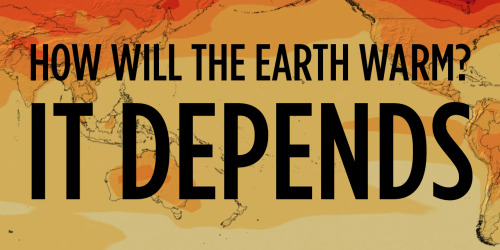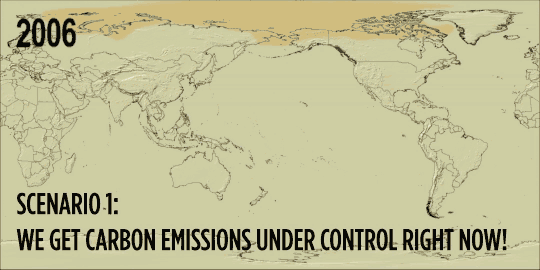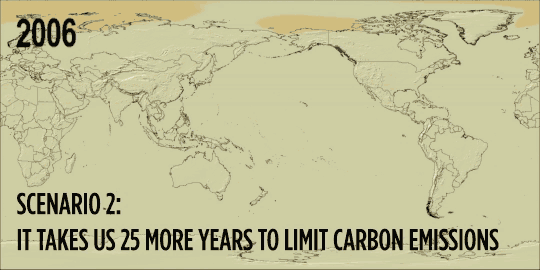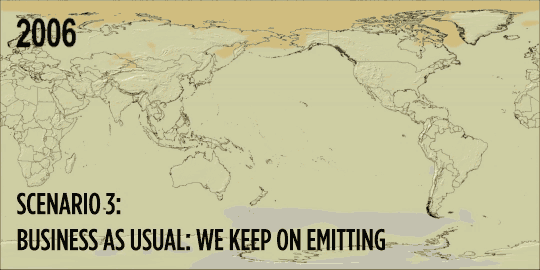Extent Of Surface Melt Over Greenland’s Ice Sheet On July 8 (left) And July 12 (right). Measurements

Extent of surface melt over Greenland’s ice sheet on July 8 (left) and July 12 (right). Measurements from three satellites showed that on July 8, about 40 percent of the ice sheet had undergone thawing at or near the surface. In just a few days, the melting had dramatically accelerated and an estimated 97 percent of the ice sheet surface had thawed by July 12.
On average in the summer, about half of the surface of Greenland's ice sheet naturally melts. But this year the extent of ice melting at or near the surface jumped dramatically. According to satellite data, an estimated 97 percent of the ice sheet surface thawed at some point in mid-July, a larger area than at any time in more than 30 years of satellite observations. This extreme melt event coincided with an unusually strong ridge of warm air, or a heat dome, over Greenland. The ridge was one of a series that has dominated Greenland's weather since the end of May
More Posts from Envirographs and Others

Ongoing drought conditions have the prompted the U.S. Agriculture Department to declare a federal disaster area in more than 1,000 counties covering 26 states. That's almost one-third of all the counties in the United States, making it the largest disaster declaration ever made by the USDA. The result is skyrocketing corn, wheat and soybean prices.

Glass recycling rates in Europe

The reduction in CO2 emissions from the energy sector in the U.S. over the past 5 years (see previous post) was due in large part to a reduction in emissions from coal. In 2009, the financial collapse led to diminished use of all fuel sources and greenhouse gas reductions across the board. Since then, the expanding use of natural gas has increased it's carbon footprint, but the decline in the use of coal and the subsequent decrease in greenhouse gas emissions associated with coal is remarkable. Coal is the most carbon-rich fossil fuel, so any declines from that source is good news for the climate.


Domestic cats allowed to roam freely outdoors are not native to the ecosystem and can cause substantial damage. Cats hunt birds, rodents, reptiles, amphibians and insects that are important components of ecosystems. The first graph shows that birds and mammals are the primary prey targets of outdoor cats, while the second shows estimates for the numbers of birds and mammals killed annually by cats in the mainland United States.

National temperature data, collected since 1895, shows 2012 will shatter the previous record for the warmest spring. The previous record spring in 1910 had a national average temperature of 55.1°. However, the March 2012 temperature exceeded March 1910 by 0.5° to set a new record for the month. April 2012 then exceeded April 1910 by 1°. Also worth noting that 4 of the previous 10 record warmest springs have occurred the 21st century.


From the International Energy Agency:
Global carbon-dioxide (CO2) emissions from fossil-fuel combustion reached a record high of 31.6 gigatonnes (Gt) in 2011, according to preliminary estimates from the International Energy Agency (IEA). This represents an increase of 1.0 Gt on 2010, or 3.2%. Coal accounted for 45% of total energy-related CO2 emissions in 2011, followed by oil (35%) and natural gas (20%).

Historic drought in California affects more than California. Local impacts of climate change have broader implications.

Coal's share of U.S. electricity generation has been steadily declining, a result of market forces, particularly the low price of natural gas and the expense of building new coal plants. Since throughout its life cycle coal is arguably our dirtiest fuel source (from mountaintop removal mining, to mercury and air toxics released during combustion, to carbon emissions, to hazardous coal ash), a move away from reliance on coal benefits public health, the environment and the climate.





As governments discuss climate change in Paris, they’ll be referring to the dire predictions of climate scientists. Here are three visualizations of possible futures based on detailed climate models and summed up by the United Nations’ Intergovernmental Panel on Climate Change (IPCC) in their 2013 report. The deeper the red - the hotter things are getting.
The message is clear: we better act fast.
How did they come up with these models? Read or listen to Nell Greenfieldboyce’s story.
Image Credit: NASA’s Scientific Visualization Studio and NASA Center for Climate Simulation
-
 envirographs reblogged this · 12 years ago
envirographs reblogged this · 12 years ago
A visual exploration of environmental problems, movements and solutions.
151 posts